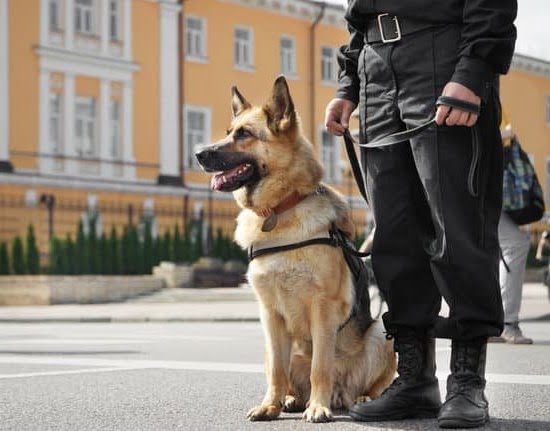Introduction
Service dogs play an incredibly important role in society. Service animals provide invaluable help to those living with a wide range of physical and mental disabilities, allowing many people to lead more confident and independent lives. Without service dogs, many individuals may remain socially isolated or unable to access the support they need to thrive. Additionally, service animals can also help increase community inclusion by improving the way certain people are perceived by others, who may not initially be aware of their disabilities or special needs.
What makes these service animals even more remarkable is their commitment to helping those in need – a task that requires extensive training and guidance from experienced professionals. Thankfully, several specialized training organizations exist, devoted to ensuring service animals receive the skills and knowledge required for safe and effective working conditions. These organizations provide detailed instructions on how to properly train different types of working animals for various roles and settings. For instance, instructions might include teaching commands such as sit/stay, walking politely alongside a person without pulling on the leash and recognizing any hazardous situations like obstacles or loud noises in public places.
In addition to providing instruction on proper behavior among animals, many training organizations also provide educational materials such as handouts and seminars for owners that cover topics like understanding animal behavior patterns and guidelines for taking care of a service dog’s health and wellbeing throughout its lifetime. Such programs are essential for making sure both owners and non-owners understand the importance of treating all service dogs with respect while out in public – something that can have tangible impacts on someone’s quality of life if not done properly.
Clearly then, training organizations have an enormous responsibility when it comes to ensuring service dogs live healthy lives while out in public settings. By providing rigorous instruction in canine protocols along with educational materials that inform non-ownership individuals on how to act around those with assistance animals, these organizations play an extremely vital role in providing comfort, safety and security both within society and across local communities alike.
Historical Overview of Service Dogs
The use of service dogs dates back to thousands of years ago. During Ancient Egyptian times, trained dogs were used for hunting and helping with the herding of livestock. Later in Ancient Greece, the poet Homer used Odysseus’s dog Argos as an example of how loyal service dogs are to their owners. Service dogs have also played an important role in military history. During World War I and World War II they were involved in a variety of tasks such as search and rescue, sentry duty, aiding soldiers with physical disability, transporting supplies, carrying important messages and tracking enemy troops.
In more recent years, service dogs have been incredibly beneficial to those with physical or mental disabilities by providing assistance with everyday tasks such as picking up dropped items, opening doors and providing emotional support. Nowadays service animals are considered essential companions and provide invaluable help to their owners thanks to specialized training they receive from organizations dedicated solely to guiding them in developing these skills.
Types of Training
The training of service dogs usually follows a series of stages or levels, depending on the requirements and specifications of the handler. Some common types of training can include basic behavioral teaching such as puppy obedience, reaction to situations like running to an exit in an emergency situation, obedience commands for particular activities like walking around a store shopping or hauling daily items for the handler, alerts to their owner about upcoming dangers or for lack thereof such as when retrieving medicine from another room, and responding to vocal commands such as turning doors on and off depending on the need at hand.
Additionally, handlers will also have their service dog learn how to react with other people and animals that they may encounter out in public. This includes learning proper etiquette and manners so that they can travel freely without causing any disturbances or panic amongst those standing near by. If necessary, service dogs can also be trained in certain forms of therapy work – where they may provide comfort to a person with emotional issues or physical pain. Finally, skill related tasks such as using stair lifts and rolling beds are also part of a service dog’s repertoire – both these skills are essential when it comes to providing assistance in different situations. All this training is undertaken by experienced professionals specifically chosen for their expertise in dealing with animals – not only do they guarantee safe usage of assistance animals but also ensure 100% compliance with all applicable laws.
Types of Organizations
A service dog organization refers to a group of individuals, including trainers and volunteers, that are dedicated to the safety, training and overall welfare of service dogs. The services they provide may differ by type of organization, but the main goal is always the same: to ensure that both the people and their service dogs are equipped with all the necessary skills needed for successful completion of their partnership.
The types of organizations include those offering guide dog services for the blind or visually impaired; facility/mobility dog services for those using wheelchairs or strollers; hearing dog services focused on attending to sound cues from doorbells and smoke alarms; psychiatric service dogs trained to help with depression or post-traumatic stress disorder (PTSD); emotional support animals trained specifically for comfort issues related to chronic illnesses, disabilities or mental health conditions; and search and rescue teams that use specially trained K9s to locate lost people in urban or wooded areas. These organizations typically place an emphasis on adequate training in proper behavior and communication; provide evaluations, screenings and professional instruction; have exposure programs available to increase public education on working service dogs; involve community outreach activities such as school presentations and fundraising events; offer advice on medical care and other basic needs; maintain collaborations with relevant industry partners including animal shelters, dog sport clubs, certified veterinary clinics and assistance dog international groups; as well as employ challenges like addictions assistance tests, maze navigation tasks and etiquette examinations.
Financial Support
Training a service dog can be very expensive and the costs associated with proper training must be taken into consideration. The cost of a professionally trained service dog can range anywhere from $10,000 to over $30,000 depending on the type of assistance needed and the complexity of the task. The fees go to cover costs such as veterinarian check-ups, food, boarding/training facilities and instructor fees. Fortunately, there are organizations which can provide financial assistance to help offset these costs. Commonly found in the form of grants or scholarship programs, some organizations offer assistance ranging from partial funding to full coverage. Examples include United States War Dog Association, Assistance Dogs International, America’s VetDogs (funded by the American Humane associated) and K9s For Warriors (Iraq & Afghanistan Veterans of America). These are just a few examples; there are many more organizations out there that may also provide financial aid for those seeking to train a service dog including state-run disability services organisations which sometimes have funds specifically designed for this purpose.
Benefits of Organizational Training
Organizational training for service dogs can provide a wide array of tangible and intangible benefits. The most important of these is the fact that it gives the dog the skills they need to be successful in their role. This means they can interact safely, be alert in new environments, and confidently handle whatever tasks are required of them. In terms of other tangible benefits, well-trained service dogs are typically healthier due to their rigorous exercise requirements, less prone to behavioral problems due to their obedience training, and more easily accepted in public places because they know how to behave appropriately.
In addition to these tangible benefits, organizational training also offers quite a few intangible ones. For starters, this type of training creates bonded relationships between the dog and their handler that would not develop otherwise. It instills trust within both parties as it allows them to move through difficult situations together safely and confidently. It also boosts confidence in humans by allowing them to feel secure knowing that there is another being physically connected with them who will help protect them in times of danger or distress. Finally, service dog organizations often create a community spirit among the handlers; inspiring a sense of camaraderie as people come together to work towards achieving shared goals with their canine counterparts.
Taking Action
Joining an established service dog training organization can provide aspiring trainers with an invaluable opportunity to engage in best practices and gain hands-on experience in the field. These organizations usually require prospective members to demonstrate a commitment to safety, animal welfare, and following regulations. This could involve completing initial educational programs, attending conferences or webinars, and even observing expert trainers on placement visits prior to becoming qualified as handlers. Additionally, some major organizations also offer independent study courses for those who may not be able to commit to full-time participation but still wish to pursue service dog training from the comfort of their own homes.
These courses typically feature interactive videos, additional reading materials, online workshops or lectures from professionals within the industry, as well as direct mentorship from experienced volunteer trainers. Furthermore, these same organizations can provide an additional level of support through online resources such as FAQ databases that answer key questions about canine behavior or health issues related specifically to service dogs; this is especially important for individuals who are interested in becoming trainers and would like an introduction to common challenges they may encounter in the field. Finally, many of these organizations also offer job placement services that facilitate connections between potential employers and newly certified service dog trainers – a great way to get started on your journey towards a fulfilling career helping others.
Conclusion
In conclusion, organizations that train service dogs are invaluable to the community. They have the power to transform people’s lives by providing them with a loyal companion to help improve their quality of life. Additionally, these organizations provide the opportunity for those looking to make a meaningful difference in their community by providing tailored instruction and training to ensure these brave animals are able to serve and protect those in need. For anyone looking for an inspiring career path that has a lasting impact on others, joining or contributing to a service dog organization is a rewarding choice both personally and professionally.

Welcome to the blog! I am a professional dog trainer and have been working with dogs for many years. In this blog, I will be discussing various topics related to dog training, including tips, tricks, and advice. I hope you find this information helpful and informative. Thanks for reading!





